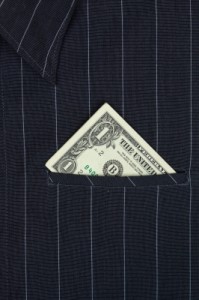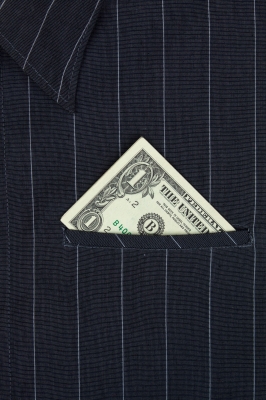 So who are the top 1% of wage earners in America?
So who are the top 1% of wage earners in America?
By Holly A. Bell
What are their lives and households like and what do they do? The New York Times recently published an article that gives us some real insights into the highest 1% of income earners. You might be surprised who they are.
The first thing most people don’t realize is the range of incomes in the top 1%. The bottom of this group makes about $380,000 a year. While I realize this is a significant income, it is not unusual for a household with two working professionals to earn $380,000. Doctors, lawyers, pilots, entrepreneurs, accountants, and managers certainly have the potential to make $190,000 each or more. The thing that is significant about the lower end of the 1% is that these are the working class 1% who earn their living by owning small businesses or collecting a salary. According to The World Top Income Database, just over 84% of income in 2008 for the top 1% of earners in the U.S. came from wages, salaries, and pensions or entrepreneurial activities. These people pay their “fair share” and often have marginal income tax rates of 33-35%. Their primary source of income is not the passive investment income associated with the “idle rich” who only pay a 15% capital gains tax. These are not Wall Street tycoons or unemployed rich kids, they are hard working people. In fact most of the people in the top 1% of income earners work pretty hard. While some are born with certain socioeconomic advantages, they work on average more than 50 hours a week.
How you define the upper 1% of earners is also quite dependent on where you live. While the national average is $380,000, in Stanford, CT you need to make $900,000 to be in the top 1%. In Clarksville, TN you only need to make $200,000. The top 1% is a very diverse group. Nationally the average income of the top 1% is $1.5 million with the top tenth of the group averaging $6.8 million annually according to 2011 census figures cited in The New York Times. There are major differences between the top and bottom of this group as they range from $380,000 a year to multi-billionaires. It’s also interesting to note that while from 1999 to 2007 the earnings of the lowest 1% was rising on average, but beginning in 2008 the income of those households began to fall indicating they have been impacted by the recession just like everyone else.
So what jobs do the top 1% of households have? Again according to The New York Times, the largest single group was managers. While one of the largest subgroups was securities and banking managers, construction managers were also significantly represented. Other significant groups you would expect to see were lawyers, physicians, CEOs, and sales people.
What might surprise you is that in absolute terms the largest subgroup of CEOs had a smaller number of members in the top 1% (86,717) than the combined teaching groups of elementary and secondary school teachers and college and university professors (91,034). While teachers and professors don’t generally make enough money themselves to put them in the top 1%, they do live in households with incomes in the top 1%. These are most likely people who have a passion for teaching and have decided they can afford to teach. In this case these teachers are being taxed at their partner’s highest marginal tax rate reducing their pay even more. If you look at the graphic, you will be quite surprised to see the size of the teacher group relative to the other groups.
Some more surprises include that a mechanic is nearly as likely to be in the top 1% as an airline pilot. A waiter or waitress is more likely to live in a 1% household than a carpenter and as likely as insurance adjustors, examiners, and investigators.
While the media has done a fantastic job convincing the public that the top 1% of households in our society are evil mega-millionaires who steal from the rest of society for their own personal gain, the reality is people in these households often look a lot like you. They work hard, pay high tax rates, and work longer than average hours each week. These households contain computer software designers, secretaries, farmers, teachers, nursing aides, truck drivers, childcare workers, dock workers, and machinists. Odds are you’re working with someone in the top 1%of households right now.
In 2009 the top 1% paid 36.73% of all income tax collected in the United States while the top 10% paid 70.47%. The wealthiest among us are paying the vast majority of taxes with the average tax rate of the 1% at 29%. Raising the highest marginal tax rate above 35% will only harm the working class 1% who are already paying high tax rates. Do I think it’s fair that Mitt Romney and Warren Buffet are only required to pay a 15% capital gains tax while my dentist pays 35%? No. But let’s not confuse the working class 1% with those who have the majority of their incomes from so called “passive sources”.
While defending the value the investments the super-rich contribute to society is the subject of another article entirely, let me assure you that most of these people are not as evil as they’ve been portrayed. Most aren’t engaged in Ponzi schemes, dolphin killing, or frightening small children. To describe their income as “passive” is also not fair as it implies they are doing nothing to earn it. Believe me, these people work very hard to manage their assets to ensure sustainability and continued growth. So rather than raise taxes on those who provide capital, one of the essential factors of production in an economy, let’s lower everyone’s tax rate to 15% (on income over some established minimum subsistence threshold) and eliminate deductions. If we want everyone to pay his or her “fair share”, shouldn’t everyone be paying equal rates, not just the super-rich? Currently only about half the U.S. population actually pays income taxes. Is that fair? In fact many people get refunds that are greater than the amount of taxes they paid in. Is that any more “fair” than the super-rich paying a lower tax rate? Frankly income gained through the income tax system is more “passive” than investment income that must at least be managed.
Don’t worry, by eliminating deductions, the rich will still be paying a greater percentage of the overall national tax burden and the poorest in our society will continue to pay nothing. The big difference is that no one will profit from the income tax system (rich or poor) and working people will all be treated equally. After all, isn’t that one of the principles upon which this country was founded?

Holly, I saw this on Greg Mankiw’s blog and thought I would share it, since it touches on the difference between tax collection and tax incidence. When people start throwing around the 15% capital gains tax, we may confuse things some and I think this post is helpful in getting things straight: http://prometheefeu.wordpress.com/2012/01/26/mank….
Peter, we just had this very discussion in my Microeconomics class today! I tried to keep my approach to the issue simple by framing it in terms of income, so it wasn\’t too much to swallow. I tend to agree that the corporate income tax does not fall exclusively to the owner or shareholders, but get spread out to consumers in the form of higher prices and employees in the form of lower wages (as two examples). It harms both consumer and producer surplus creating deadweight loss. As a result, while Warren Buffet ultimately pays something greater than 15%, he still doesn\’t bear the entire 40% (25% corporate + 15% capital gains).
I should mention, I don’t think you’re confusing these. That’d be absurd but I know lots of people (especially my FB friends) do confuse these issues.
We need to distinguish between ‘wealth’ and ‘income’, when we want to assess level of acceptable inequality in a democracy. Extreme inequality creates many environmental, social, physical and mental health problems. To see the vast difference in the top 1% of income earners means that real concentration of wealth and speculative investments is in the hands of .001% of plutocrats. But how does our centralized privatized money and banking system (based on fractional reserve) makes it possible? Very few look into that blindspot long enough to see some patterns. Is it an accident that the US Income Tax and the FED have the same birth year 1913 and they both violate the US constitution? The gold standard based fractional reserve banking is still operates as the foundation of modern banking, but there is no gold in FED, only certificates. How does this system feed the military intelligence complex, the shadow government behind the mask of democracy? http://www.youtube.com/watch?v=0OkITedQrek&feature=related